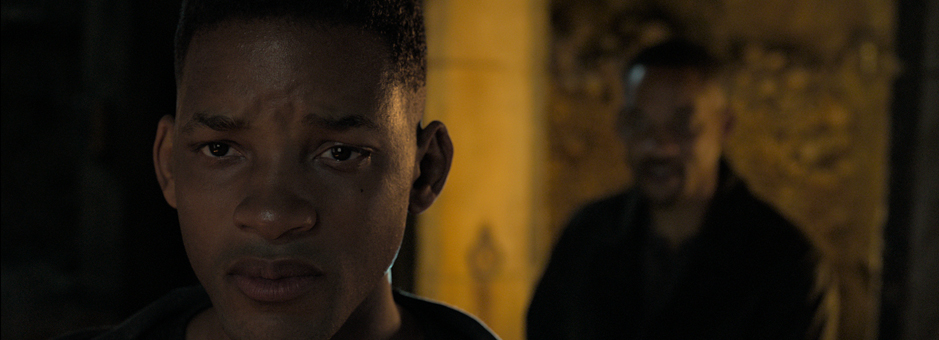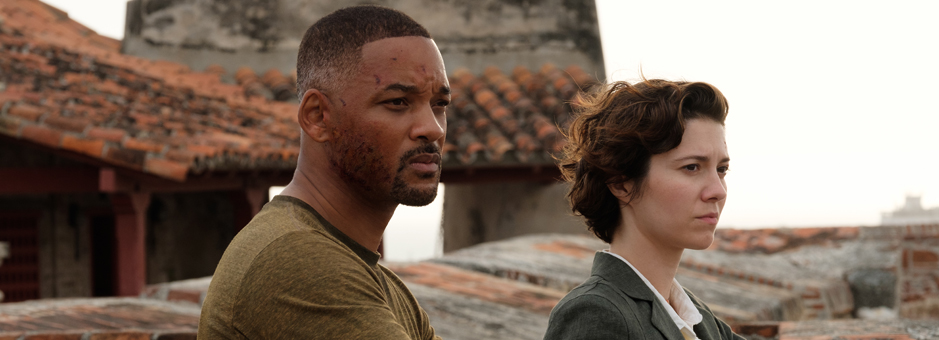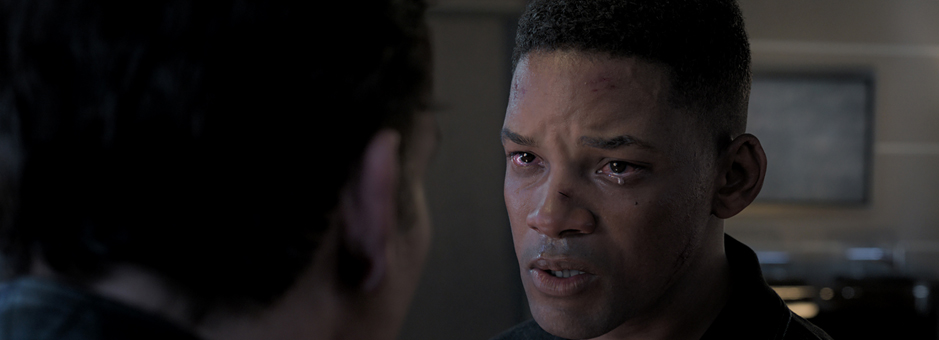Case Studies
Grading and finishing ‘Gemini Man’: 120fps, 4K, high dynamic range 3D
Gemini Man, the new movie from director Ang Lee, presented a huge challenge for post, as it was shot and finished in 3D at 120 frames per second, using specially modified ARRI cameras shooting at 3.2K. This represented a huge amount of data to be managed, graded and rendered in post. FilmLight talked to technical supervisor Ben Gervais and colourist Marcy Robinson about the challenges of grading and finishing the movie.
Gemini Man tells the story of a hitman, played by Will Smith, who is pursued by a rival, who turns out to be his son, known as Junior – also played by Will Smith.
For this film, Ang Lee turned once again to the team that had helped him push the technical boundaries on his first 120fps 3D movie, 2016’s Billy Lynn’s Long Halftime Walk. But while both projects were graded on FilmLight’s Baselight X grading system, for Gemini Man the dailies were also completed on Baselight, and the team used Baselight for NUKE plugins to bring the powerful Baselight grading toolset directly into the VFX pipeline.
4K high dynamic range data, at five times the normal frame rate, and doubled for 3D – that makes for a lot of data. “If you shoot two hours in the day, you’ve got the equivalent of 20 hours of footage,” Gervais explained. “It became obvious very early on that I had to work outside the typical media storage solution.
“So we worked with a company called Penguin Computing,” he continued. “They specialise in super-computing, in areas like genome research. They provided us with a unique clustered storage system, which connected over 100 gigabit ethernet. It had three petabytes of spinning disks and 300 terabytes of SSD.”
Due to the enormous data throughput, the team made the decision early on to take the storage solution, along with the Baselight X grading system and the rest of the location kit, to the multiple shooting locations. This included the principle location sites in Savannah, Georgia and Budapest, Hungary. The location kit also included 120 frame 4K 3D projectors, so dailies review sessions were run directly from the Baselight X system, allowing colour adjustments to be made easily and captured for the finish. It also allowed them to create a graded mezzanine format for editorial.
Having this kit with them on location meant they could also use it for production preview screenings. “For the first preview, I went through it with Derek Schweickart, the DI supervisor, and did a smoothing pass myself,” Gervais recalled. “After the second preview, we managed to steal Dion [Beebe, DoP for the movie] for a week with colourist Marcy Robinson, and we started setting looks at that point.”
On top of the technical challenges of Ang Lee’s demanding format, the demands of the story in having Will Smith play two versions of himself, both vastly different in age, resulted in over a thousand VFX shots in the movie.
The “Junior” shots were done by Weta Digital in New Zealand. That meant exchanging full resolution backgrounds and effects plates halfway around the world. With constant iterative reviews for key VFX shots, the team needed to move terabytes a day in each direction.
Other VFX shots were handled by an in-house team, with access to the same shared storage and render farm. They used Baselight for NUKE plugins to give them full complex grades directly in NUKE, which helped with creating previews and editorial temp files. By seeing the full grade in context, compositors and finishing artists could spend time optimising the important factors for a shot and ignore those elements that the final grade would make unnecessary. This simple, effective workflow is based around the Baselight Linked Grade (BLG), a small and portable data file that enables looks to be exchanged simply and quickly with Baselight.
With principal photography complete, the post team moved into Final Frame, a facility in New York, where they kitted out a screening room with the high-speed projectors, and linked up the storage network and Baselight X.
“We spent the first six weeks of DI just doing the hero grade,” Gervais said. “That’s the master – the 120 frame, 4K, 3D version of the film.”
Colourist Marcy Robinson took up the story. “In total, we did eight different colour grades. There was the 3D master at 28 foot-lamberts and also 14, 7 and 3 foot-lambert 3D versions. We did two Dolby Vision versions – 2D and 3D – plus a regular 2D and a couple of trims for home theatre.”
“We were switching between colour spaces, as well as different projector brightness,” she added, paying tribute to the power of the Baselight X. “There were also frame rate conversions from 120 to 60 to 24 with each grade. So actually something like 27 versions of the movie.”
Gervais estimates that each of the trim grades took two to five days, giving a total post time of 12 weeks.
“Ang [Lee] came in and out a lot. He always had a ton of other stuff going on between sound-mixing, VFX reviews and whatever else,” Robinson recalled of the grading sessions. “We would have sessions where we watched the whole movie together, he would give feedback and then I would go back to work. When Dion was there we would all work together quite a lot and Dion and I on our own as well.”
“Much of my work was in continuity,” Robinson added. “Making sure each location had the very specific look that Ang had in mind. We would usually go with the feeling that each location provided, one being sunny and colourful for instance, and another more bleached. This was not about compensating what was shot, for Ang this was about feelings and subtlety.”
Critics have particularly praised the day for night scenes in Gemini Man. How much of that was shot and how much in the grade? “Most day for night shots had VFX work, but the shooting still needed to be very well planned and thought out,” said Robinson. “In the grade there was always questions about realism vs. aesthetic and also about what had traditionally been done with night scenes vs. making them prettier, more detailed and real.”
At the end of the grade, the kit was packed up again and the Baselight X was installed in the Dolby 88 screening room in uptown Manhattan. “Instead of moving all the kit to LA, we could do it in New York which was very helpful for the schedule.”
Since Billy Lynn’s Long Halftime Walk back in 2016, the core Baselight software has been transformed with the release of version 5: features include the ground-breaking Base Grade and new tools – much appreciated by colourist Marcy Robinson – like the Flare control in the new Base Grade and the Tracker functionality.
“Each tool in Baselight really performs,” explained Robinson, “and in such an elegant way. And I can only praise the support team from FilmLight for their personal approach on a day-to-day basis”.
“The new features really helped us out on the DI and on the delivery,” Ben Gervais said. “The flexibility was very important, and it helped us get from the 120 fps version to the 60 to the 24 pretty easily.
“The first time we worked in this format it was a little bit scary because none of it had been done before,” he continued. “Now we can sit there and say ‘we are doing in two days what would have taken us four’. That’s very rewarding.”
Gervais also praised the ability to create unique colour spaces simply and easily. To match the latest Christie projectors being used for post and for commercial screenings, Gervais could write his own colour space to create a perfect match. All in all, he felt that now he was focusing much less on technical challenges and more on realising the artistic vision.
“We worked together to get everything exactly the way we wanted it,” he said, “so we could really concentrate on Ang’s new aesthetic of digital cinema.”
That was backed up by Marcy Robinson. “Ang is amazing,” she said. “His vision is incredibly clear and he is very straightforward about where he is wanting to go – I really appreciate that about him. The whole post team was exceptional: everyone feels in place and working towards a common goal, and Ang is always heading that.”
“Much of my work was in continuity. Making sure each location had the very specific look that Ang had in mind. This was not about compensating what was shot, for Ang this was about feelings and subtlety.”
Download








